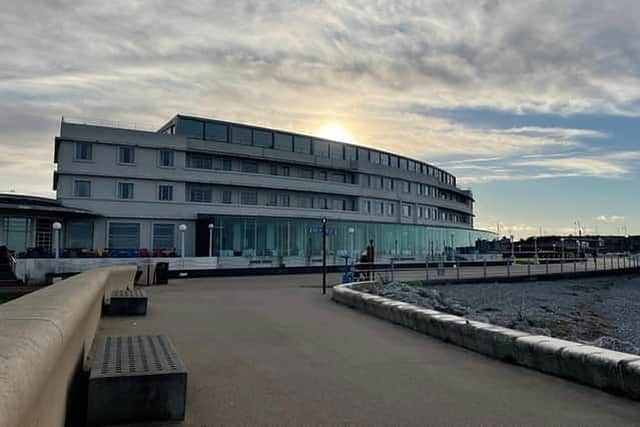London and Morecambe's Midland Hotels are focus of latest talk given to Burnley and District Historical Society
and live on Freeview channel 276
Molly Haines gave the talk which featured the Midland Hotel at St Pancras and the Midland Hotel at Morecambe.
The hotel at St Pancras was officially opened in 1873. It was designed in Victorian gothic style with its lavish interior including costly fixtures and featuring a grand staircase, rooms with gold leaf decorating the walls, and fireplaces in every room. There were innovative features such as hydraulic lifts, and revolving doors although none of the rooms had bathrooms which was not unusual for that period.
Advertisement
Hide AdAdvertisement
Hide AdBy 1935 the hotel’s utilities had become outdated and the hotel itself was proving too costly to maintain so the hotel was closed. From then on it was used as railway offices until in 1980 the premises failed the requirements of fire safety regulations and were closed.


John Betjeman
As the building deteriorated it became threatened with demolition. Campaigners including Poet Laureate John Betjeman managed to get the building awarded Grade 1 listed status although it remained empty for many years deteriorating still further. In 2004 planning permission was given to redevelop the building as a hotel and following restoration it re-opened in 2011.
Art deco
The Midland Hotel in Morecambe was built in 1933 in the art deco style of the time. It was a three storey curved building with a central circular tower containing the entrance to the hotel and a grand spiral staircase.
The front of the hotel was decorated with sculptures of seahorses and the inside featured sculptures, mosaics, a mural by Eric Gill.
War
Advertisement
Hide AdAdvertisement
Hide AdWhen the First World War broke out the hotel was commissioned by the Government to be used to accommodate members of the Royal Air force and civil servants.
In 1940 it began use as a military hospital and was stripped of its valuable carpets and rugs and its famous mural was covered up. After the war the building remained empty and began to deteriorate. Facing demolition it was saved by campaigners who managed to obtain Grade 2 listing in 1976.
In 2005 work began on the restoration of the building and the features including the sculptures and Gill’s mural. It re-opened as a hotel in June 2008.
Although both hotels are quite different in appearance they have several things in common. They were both built by railway companies to accommodate passengers travelling by rail. They both escaped demolition when campaigners stepped in to get the buildings listed.
Former glory
Advertisement
Hide AdAdvertisement
Hide AdBoth have in recent years been restored to their former glory because of modern day interventions. In the case of the St Pancras hotel when St Pancras station re-opened for international rail travel by Eurostar and in the case of the Midland in Morecambe with recent investment to enhance Morecambe as a main tourist attraction including the forthcoming Eden Project.
King Cotton
The next meeting of the society will take place on March 8th at St John’s parish hall in Ivy Street at 2pm. The lecture is entitled “King Cotton – how it affected other industries” by Kathy Fishwick. This is the Walter Bennet memorial lecture. Current members, new members, and guests are welcome to attend.
